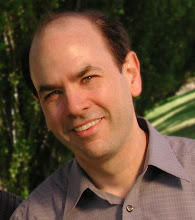When in the course of human events, it becomes necessary for one profession (UXD) to dissolve the bonds which have connected them with another profession (Software Engineering), and to assume their own powers, separate and equal from other professions to which the Laws of Nature entitle them. A decent respect to the opinions of software engineering requires that User Experience should declare the causes which impel them to the separation.
We hold these truths to be self-evident, that all products are endowed by their creators with user experiences with certain unalienable Rights, that among these are usability, satisfaction, and business feasibility. Furthermore the user has a right to a user experience which is derived from the entire company/organization not just what is technically feasible at a given moment.
That to secure these rights, User Experience professionals are engaged by companies and businesses. These professionals derive their just powers from a professional integrity that must not be compromised, otherwise the User Experience design loses whatever rights they have to exist.
Software Engineering as a process has had a tyrannical effect on the User Experience professional, forcing them to shorter and shorter deadlines with less and less available resources that the point is reached that UX Professionals often find themselves going through motions rather than truly designing professional products the way they are truly capable of creating them.
The history of Software Engineering processes are a history of repeated injuries and usurpations of UX terrain, all having in direct effect the establishment of an absolute Tyranny over this profession. To prove this, let Facts be submitted to a candid world:
- Development methods are continually shortening their design process and their delivery deadlines
- This makes it impossible to do a thorough and adequate design process, forcing us to take all kinds of irresponsible and inappropriate short cuts.
- Specifically, Agile development processes attempt to preclude any upfront design or research as good UX processes demand
- Development do not use UX metrics as a measure for their success
- Consequently there is no business case for following UX best practices
- Development keeps the UX bar purposefully low so that UX accountability is
- non-existent -- even when it is clear that products are failing because of their poor user experiences
- an afterthought -- the product is a success or failure and after the fact UX is blamed or ignored
- an anecdote -- the arbitrary story or urban legend of use becomes definitional for the user experience
- unprofessional -- as long as the bar is low, poor UX design will yield equal results making the establishment of UX best practices very difficult
- Development’s near fetish-like fascination with a release puts artificial blinders on the UX processes, resulting in:
- assuring structurally sub-optimal results
- cutting corners when it really is not necessary
- giving undue credence to an artificial argument against UX additional processes
- obscuring the value of user experience design by forcing it into the release focus of software engineering.
- UX quality is now reliant on the kindness of strangers, that will say the extent to which a Software Engineering team is or is not enlightened to the value and processes of User Experience Design.
We, therefore, the Representatives of the united User Experience Designers hold that instead of working under the hegemony of engineering, User Experience activities should work in coordination, not in tandem with Software Engineering.
Among the ongoing process which User Experience should be working on independent of Software Engineering include (partial list for the longer list of UX processes see the previous post in this blog):
- User Research
- Design Research
- Requirements gathering (SE’s are needed for technical requirements but that is only one part of the whole requirements picture
- Product design
- Conceptual design which may cover multiple products/channels and multiple releases.
Places where software engineers and user experience should closely together is
- translating a conceptual design to a specific product release cycle
- product definition
- product detailed design
- product design reviews and iterations
- mentoring developers through a product release
- evaluating software engineer work for fidelity to UX concept using appropriate UX metrics
- release planning
Software engineering in turn should act as mentors in the UX processes assuring technical feasibility for short and medium term are tracked and noted. In this way Software Engineering, Product Management and User Experience are truly equal partners in the creation of great products and product experiences.
Signed 2 March 2010

1 comment:
I love articles like this. You can expand your knowledge or get confirmation that the metrics and data you are tracking are being done by others. The other aspect I like about posts like this are debating points you do not agree with.
Post a Comment